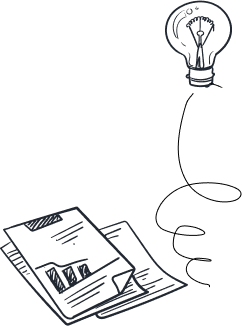Your life today is essentially the sum of your habits. From the moment you wake up to the moment you go to sleep, a vast portion of your choices are not the product of conscious decision-making, but the result of unconscious routines you have formed over time. This is why "willpower" so often fails us when we try to make a change. We are trying to fight a deeply ingrained neurological process with a finite mental resource. The secret to lasting change is not more willpower; it is "better science." This article is your guide to that science, a deep dive into the psychology of how habits work, and a practical blueprint for re-engineering your own.
Key Points
- Your habits are not a reflection of your willpower but are "neurological shortcuts" the brain creates to save energy, governed by a three-step process known as the "Habit Loop."
- The Habit Loop consists of a "Cue" (the trigger), a "Routine" (the behavior itself), and a "Reward" (the benefit that makes the brain want to repeat the loop). Understanding this loop is the key to changing any habit.
- To break a bad habit, you must follow the Golden Rule of Habit Change: "Keep the cue and the reward, but change the routine." You replace the harmful behavior with a healthier one that satisfies the same underlying craving.
- To form a good habit, you must intentionally engineer a new loop by making the cue obvious, making the routine incredibly easy to start (the "2-Minute Rule"), and making the reward immediately satisfying.
- Lasting change is not about dramatic, overnight transformation but about understanding the science of your own behavior and making small, strategic adjustments, a process that is closely tied to the principles of overcoming negative self-talk.
Introduction: The Invisible Architecture of Your Life
Think about your morning. Did you consciously decide which side of the bed to roll out of? Did you debate which shoe to put on first? Did you map out the precise route to the coffee maker? The answer is almost certainly no. A significant portion of your day, estimated by researchers at Duke University to be over 40 percent of the actions people perform each day, are not the product of active decision-making, but of "habits."
These automatic behaviors are the invisible architecture of our lives. They are the neurological shortcuts that our brains create to free up mental energy for more complex problems. While this efficiency is a marvel of evolution, it comes with a catch: the brain does not distinguish between "good" habits and "bad" habits. It simply automates what is repeated. This is why we so often find ourselves stuck, repeating the same self-sabotaging behaviors despite our best intentions. We declare that "this time will be different," relying on a burst of willpower, only to find ourselves falling back into old patterns. The reason is simple: we are fighting a powerful, efficient system without understanding the rules of engagement. This article, by psychologist Dr. Anya Sharma, is your rulebook. We will deconstruct the science of how habits form, and provide a practical, evidence-based guide to becoming the conscious architect of your own routines. All information is current as of Tuesday, September 23, 2025 at 7:23 AM GMT from Kumasi, Ashanti Region, Ghana.
Deconstructing the Habit Loop: The 3-Part Neurological Code
At the heart of every habit, whether it is compulsively checking your phone or meditating for ten minutes every morning, is a simple neurological loop. Researchers at MIT discovered this three-step process that the brain follows to automate behavior. Charles Duhigg, in his seminal book "The Power of Habit," popularized this as the "Habit Loop."
1. The Cue
The cue is the trigger. It is the bit of information that tells your brain to go into automatic mode and which habit to use. Cues can be almost anything.
- An "emotional state" (feeling stressed or bored).
- A specific "time of day" (like 3:00 PM, when you typically hit an afternoon slump).
- A "location" (walking into the kitchen).
- A "preceding action" (finishing a meal).
- The "presence of other people" (seeing a friend who you always have a drink with).
The cue is the starting pistol for your routine.
2. The Routine
The routine is the behavior itself, the physical or mental action you take. This is what we typically think of as the "habit." It can be complex, like backing a car out of the driveway, or simple, like biting your nails. This is the part of the loop we are most aware of and the part we usually try to change through sheer force.
3. The Reward
The reward is the positive reinforcement that tells your brain, "Hey, this loop is worth remembering for the future." The reward is what closes the loop and makes the habit stronger over time. The reward for smoking might be a hit of nicotine; the reward for scrolling social media might be a moment of social connection or a distraction from an unpleasant task. It is the reward that satisfies the "craving" that the cue initiates.
Over time, this loop becomes so ingrained in a part of our brain called the "basal ganglia" that it becomes almost completely automatic. The conscious, decision-making part of your brain, the prefrontal cortex, can essentially go to sleep. This is why you can sometimes drive home from work and have no memory of the journey; your habit loop took over.
The Golden Rule: How to Break a Bad Habit
Once you understand the habit loop, you gain access to the "Golden Rule of Habit Change," a concept central to behavioral psychology. The rule is this: "You cannot extinguish a bad habit; you can only change it." The most effective way to do this is to "keep the old cue, deliver the old reward, but insert a new routine."
Trying to fight a cue with willpower is exhausting. Trying to ignore a deep-seated craving for a reward is nearly impossible. But by changing "only the routine," you are harnessing the power of the existing loop to work for you, not against you. Let us use a common example: the habit of grabbing a sugary snack in the mid-afternoon.
Step 1: Identify Your Routine
This is the easy part. The routine is the behavior you want to change. "Every day around 3:30 PM, I walk to the vending machine and buy a cookie."
Step 2: Experiment with Rewards (Become a Scientist)
This step requires some self-exploration. The reward is not always what it seems. Is the reward of the cookie the sugar itself? Or is it the break from your desk? Is it the chance to socialize with colleagues? Is it the temporary relief from boredom?
To figure this out, you need to experiment. The next time the cue hits (it is 3:30 PM, you feel that slump), instead of performing your usual routine, try a "new" routine that delivers a different kind of reward.
- Day 1: Instead of getting a cookie, get up and walk around the block for 10 minutes. When you get back to your desk, ask yourself: "Do I still feel the urge for a cookie?"
- Day 2: Instead of a cookie, buy a cup of tea or an apple.
- Day 3: Instead of a cookie, walk over to a friend's desk and chat for a few minutes.
The goal is to see which of these new routines satisfies the craving. If you walked around the block and the urge for the cookie disappeared, then the true reward your brain was seeking was likely a "distraction and a break from work," not sugar. This insight is your key.
Step 3: Isolate the Cue (Become a Detective)
Now you need to pinpoint the exact trigger. As mentioned, there are five main categories of cues. For a week, whenever you feel the urge for the cookie, jot down the answers to these five questions:
- Where are you? (At my desk)
- What time is it? (3:30 PM)
- What is your emotional state? (Bored, tired, stressed)
- Who else is around? (My colleagues are all working quietly)
After a few days, a pattern will emerge. You will likely discover that the cue is not just "3:30 PM," but "3:30 PM when I feel bored after completing a task."
Step 4: Create a Plan
Now you have all the pieces: The Cue, the underlying Reward, and a New Routine that provides that reward. You can create a simple but powerful plan. The format is: "When [CUE], I will [NEW ROUTINE]."
Your plan might be: "When it is 3:30 PM and I feel bored, I will get up from my desk and walk over to my coworker Sarah's desk to chat for ten minutes."
This plan is effective because it is not a vague goal like "I will stop eating cookies." It is a specific, pre-loaded instruction for your brain. You have a clear cue and a clear action to take, hijacking the old pathway and redirecting it toward a better behavior.
Building Good Habits from Scratch: The Art of the Start
Creating a new, positive habit from scratch requires a slightly different approach. Here, you are not replacing an existing loop; you are "engineering a new one." The key is to make it as easy as possible for your brain to succeed.
Strategy 1: Make the Cue Obvious
You cannot act on a habit that you are not reminded to do. The most common reason new habits fail is that we simply forget about them in the rush of daily life. The solution is to design your environment to be full of obvious cues.
- Want to start meditating in the morning? Place a cushion in the middle of your living room floor the night before.
- Want to drink more water? Fill up a large water bottle and place it on your desk right in your line of sight.
- Want to learn guitar? Do not leave the guitar in its case in the closet. Put it on a stand right where you relax in the evening.
This strategy, called "environment design," makes the starting pistol for your habit impossible to ignore.
Strategy 2: Make the Routine Easy (The 2-Minute Rule)
This is arguably the most powerful strategy for habit formation, popularized by author James Clear. The "2-Minute Rule" states that any new habit should take less than two minutes to do.
- "Read every night" becomes "Read one page."
- "Do 30 minutes of yoga" becomes "Take out my yoga mat."
- "Study Spanish" becomes "Open my language app."
This sounds almost ridiculously simple, but its power is profound. A habit must be "established" before it can be improved. The goal is not to achieve a result on day one; the goal is to master the art of "showing up." By making the routine so easy that you cannot say no, you lower the activation energy required to start. You are not trying to build the habit of "doing yoga;" you are building the habit of "being a person who takes out their yoga mat every day." Once the routine of showing up is automatic, you can then focus on optimizing it.
Strategy 3: Make the Reward Immediately Satisfying
The problem with many good habits is that their rewards are delayed. The reward of going to the gym is a healthier body months from now. The reward of saving money is financial security years from now. The human brain, however, is wired for "immediate gratification."
You need to give yourself an immediate reward to close the loop and tell your brain the routine was worth it. This can be something small and simple.
- The Power of Tracking: Get a calendar and put a big, satisfying "X" on it every day you complete your 2-minute habit. The visual evidence of your streak can be a powerful reward.
- A Moment of Celebration: After you read one page of your book, allow yourself to feel a moment of pride. Say to yourself, "I am becoming a reader." This act of self-affirmation is a reward in itself.
- Reward Bundling: Link your new habit to something you already enjoy. "I am only allowed to listen to my favorite podcast while I am on my daily walk."
This immediate positive feedback is crucial for convincing your brain to repeat the loop tomorrow.
Comparison: Breaking a Bad Habit vs. Forming a Good Habit
| Element | Breaking a Bad Habit | Forming a Good Habit |
|---|---|---|
| The Cue | Identify the existing cue that triggers the bad routine. | Make a new cue as obvious as possible in your environment. |
| The Routine | "Replace" the old, harmful routine with a new, better one. | Make the new routine as "easy as possible" to start (The 2-Minute Rule). |
| The Reward | Ensure the new routine provides the "same reward" the old routine was satisfying. | Ensure the new routine has an "immediately satisfying" reward to close the loop. |
| Core Strategy | "Replacement." You are hijacking an existing loop. | "Engineering." You are building a new loop from scratch. |
Conclusion: From Willpower to Science
Changing your habits is one of the most powerful things you can do to change your life. But it is a journey that is so often derailed by a fundamental misunderstanding of how our own minds work. We treat habit change as a test of character, a battle of willpower where we must "muscle through" temptation. When we fail, we engage in the kind of shame and self-blame that we explored in Embracing Imperfections.
By understanding the science of the habit loop, you can shift from being a warrior to being an "architect." You are no longer fighting your brain; you are working with its natural tendencies. You can stop asking, "Why don't I have enough willpower?" and start asking, "How can I redesign this loop?" This shift in perspective is the key to creating small, sustainable changes that, over time, will completely transform the invisible architecture of your life.
References
- James Clear - The Habit Loop: How to Build Good Habits and Break Bad Ones
- American Psychological Association - Habits and Behaviors








